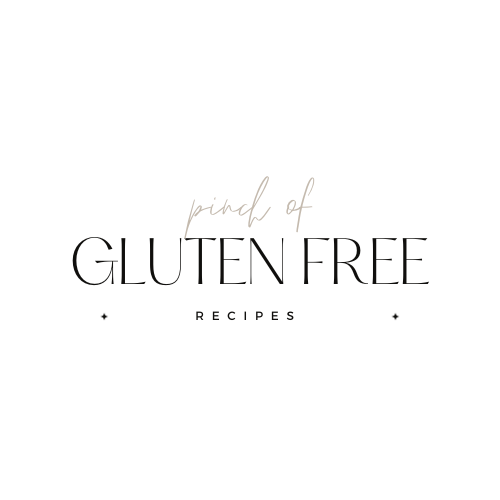The Ultimate Guide to Gluten-Free Living:
When I decided to give up gluten as an experiment to cure my ailments, my family thought I was crazy. I had been eating wheat bread, Wheaties cereal, and regular pasta my entire life without any issues. They couldn’t wrap their heads around the fact that I suddenly developed an intolerance to gluten. So, I did a little scholarly research and was able to give them the answer they needed in order to understand. The wheat of today isn’t the same as the wheat I ate when I was younger. Today’s processing techniques allow for more gluten to enter the gut, and the structure of the molecules has also changed. These things combined increase the chance for adverse reactions, such as inflammation (Gluten, 2019).
You may be wandering what gluten intolerance actually is, so let me break it down for you in non-scientific terms:
Gluten causes inflammation in the lining of the gut making it easier for things to pass through the intestinal wall into the blood stream. If you’ve ever heard someone talk about a “leaky gut,” that’s what that means. When things such as undigested food, waste, and bacteria enter the blood stream, they cause countless problems, such as pain, bloating, diarrhea, headaches, skin rashes, fatigue, and depression (Gluten, 2019).
Symptoms of gluten intolerance:
- Fatigue
- Joint pain
- Headaches
- Anxiety
- Mental “fog”
- Depression
- Skin lesions
- Allergic symptoms, such as asthma, snuffy nose, sneezing
- Abdominal pain
- Bloating
- Diarrhea
- Constipation
- Keratosis pilaris (tiny bumps usually on the upper arms)
Eliminating gluten from your diet will alleviate symptoms if gluten intolerance is in fact the cause (Allen, 2015). As always, talk with your doctor before making dietary changes. This guide is not intended to diagnose gluten intolerance. It is merely some background information and tips and tricks for living a gluten free lifestyle!
The problem with gluten free living is that a lot of the foods are highly processed. Gluten free does not mean healthy, so please keep that in mind. Whole grains are essential to preventing disease and improving overall wellness, and a gluten free diet can make it difficult to consume whole grains if you aren’t careful (Allen, 2015). Choose products that contain oats, millet, quinoa, chia seeds, flax seeds, amaranth, and brown rice. Below are some of my favorite gluten free items, and a lot of them are NOT healthy, but many of them are! Also keep in mind that rice, potatoes, sweet potatoes, all fruits, all veggies, and all meats (not breaded meats) are naturally gluten free. And some items have gluten hidden in them, so make sure you’re checking labels if you plan to eliminate gluten from your diet. Chili seasonings, taco seasonings, yeast, and soy sauce often contain gluten, so check the label and look for items that say gluten free on the front!
All of these items are tried and true and taste just as good, if not better, than gluten containing items!
Favorite Gluten Free Products:
- King Arthur gluten free pancake mix
- King Arthur gluten free muffin mix
- King Arthur gluten free yellow cake mix
- King Arthur one to one baking flour
- King Arthur All Purpose Baking Mix
- King Arthur almond flour
- Bob’s Red Mill almond flour
- Pamela’s gluten free yellow cake mix
- Pamela’s gluten free graham crackers
- Schar gluten free graham crackers
- Schar ciabatta rolls (THE BEST for sandwiches, dinner rolls, etc…)
- Udi’s gluten free multi-grain bread (it’s frozen, so lightly toast it before use to make it delicious!)
- Simple Mills almond flour crackers Fine Ground Sea Salt
- Simple Mills almond flour crackers Farmhouse Cheddar
- Orchard Valley Harvest chickpea chips Garlic and Chive
- Orchard Valley Harvest chickpea chips Chili Lime
- Tekinyaki brown rice pasta
- Trader Joe’s brown rice and quinoa pasta
- Barilla red lentil pasta
- Barilla chickpea pasta
- Barilla gluten free elbows
- McCormick gluten free chili powder
- McCormick gluten free taco seasoning
- Simply Organic taco seasoning
- Simply Organic spicy chili seasoning
- Simply Organic vegetarian chili seasoning
- La Choy gluten free soy sauce
- La Choy gluten free teriyaki sauce
- Mission gluten free flour tortillas (warm in the oven to take away the gummy texture)
- Bush’s chili beans (some other brands contain gluten)
- Annie’s gluten free bunny grahams (the snickerdoodle are my fave)
- Lance gluten free original crackers (the perfect Ritz alternative)
- Lance gluten free cheddar cheese crackers (taste similar to Cheezits)
- Bob’s Red Mill gluten free oats
- Nature’s Path Organic oats (they have a bunch of different flavors)
- Nature’s Path Organic gluten free steel cut oats
- Nature’s Path Organic Sunrise Vanilla Crunch cereal
- Nature’s Path Organic frozen waffles
- Kind granola (it says gluten free on the front)
- Kind bars
- Larabars
- Van’s frozen waffles
- Van’s crackers (The Perfect 10 and Fire-Roasted Veggie are amazing)
- Snyder's of Hanover gluten free pretzels
- Siete Almond Flour Tortillas
- Krusteaz Gluten Free Honey Cornbread
- Rx Bars
- Canyon Bakehouse Honey White bread
- Canyon Bakehouse bagels (all flavors)
- Click here for a list of my favorite gluten free pastas
Other items I keep on hand that don’t contain gluten are Hidden Valley Ranch dip packets (I add a packet to my taco meat with a packet of taco seasoning and it takes the meat to the next level), Seeds of Change rice packets (I haven’t found a flavor I don’t like), Boom Chicka Pop butter popcorn, and Mission corn tortillas. And just an FYI if your kids have a gluten intolerance, Cheerios and Lucky Charms are gluten free! Rice Krispies are NOT gluten free…they contain malt, which is a gluten-containing ingredient.
If you see wheat on the allergen list on a label, it contains gluten. Barley, rye, malt, Brewer’s yeast, spelt, and semolina all contain gluten as well. Oats are naturally gluten free, but they are often cross-contaminated with wheat, so opt for oats specifically labeled gluten free.
I hope this guide helps you live a gluten free lifestyle without deprivation!
References:
Allen, P. J. (2015). Primary Care Approaches. Gluten-Related Disorders: Celiac Disease, Gluten Allergy, Non-Celiac Gluten Sensitivity. Pediatric Nursing, 41(3), 146–150.
Gluten Intolerance - The Problem with Modern Wheat. (2019). Positive Health, 251, 6.

